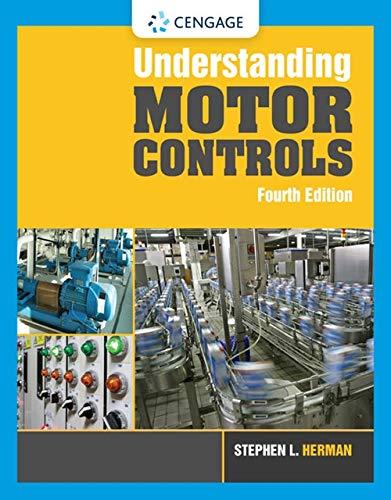
Precision Machining Technology
3rd Edition
ISBN: 9781337795302
Author: Peter, Hoffman.
Publisher: Cengage Learning,
expand_more
expand_more
format_list_bulleted
Concept explainers
Question
Chapter 2.1, Problem 16RQ
To determine
The full form of the term SDS.
The purpose of SDSs.
Expert Solution & Answer
Want to see the full answer?
Check out a sample textbook solution
Students have asked these similar questions
500
Q3: The attachment shown in Fig.3 is made of
1040 HR. The static force is 30 kN. Specify the
weldment (give the pattern, electrode
number, type of weld, length of weld, and leg
size).
Fig. 3
All dimension
in mm
30 kN
100
(10 Marks)
(read image) (answer given)
A cylinder and a disk are used as pulleys, as shown in the figure. Using the data
given in the figure, if a body of mass m = 3 kg is released from rest after falling a
height h 1.5 m, find:
a) The velocity of the body.
b) The angular velocity of the disk.
c) The number of revolutions the cylinder has made.
T₁
F
Rd =
0.2 m
md =
2 kg
T
T₂1
Rc = 0.4 m
mc = 5 kg
☐ m = 3 kg
Chapter 2 Solutions
Precision Machining Technology
Ch. 2.1 - Briefly describe what you believe are the two most...Ch. 2.1 - Briefly describe what you believe are the two most...Ch. 2.1 - What should be done in the case of a personal...Ch. 2.1 - What does OSHA stand for and what is OSHA's...Ch. 2.1 - List three specific clothing items that should not...Ch. 2.1 - If someone working around machinery has long hair,...Ch. 2.1 - Never operate machinery without proper ______ in...Ch. 2.1 - What is PPE?Ch. 2.1 - What is the most common and important piece of PPE...Ch. 2.1 - What does HCS stand for?
Ch. 2.1 - What does GHS stand for?Ch. 2.1 - What is a pictogram?Ch. 2.1 - What does NFPA stand for?Ch. 2.1 - What does HMIS stand for?Ch. 2.1 - Prob. 15RQCh. 2.1 - Prob. 16RQCh. 2.1 - Class A fire extinguishers use ______ as a media...Ch. 2.1 - What class of fire extinguisher should be used on...Ch. 2.1 - What class of fire extinguisher should be used on...Ch. 2.1 - What is the purpose of lockout and tagout...Ch. 2.2 - What is the inch equivalent of 1 millimeter?Ch. 2.2 - What is the inch equivalent of 32.5 mm to the...Ch. 2.2 - Use the decimal equivalent chart on page 69 to...Ch. 2.2 - Use the decimal equivalent chart on page 69 to...Ch. 2.2 - Use the decimal equivalent chart on page 69 to...Ch. 2.2 - What does parallel mean?Ch. 2.2 - What does perpendicular mean?Ch. 2.2 - What is the radius of a 3.65-inch-diameter circle?Ch. 2.2 - What is the circumference of the circle in the...Ch. 2.2 - What are the Cartesian coordinates of the four...Ch. 2.2 - Label the hypotenuse, adjacent side, and opposite...Ch. 2.3 - Define semi-precision measurement.Ch. 2.3 - What is comparison measurement?Ch. 2.3 - List three rules to follow when or storing...Ch. 2.3 - List the parts of the combination set.Ch. 2.3 - Describe four uses of the combination set.Ch. 2.3 - What semi-precision tool is used to take angular...Ch. 2.3 - What type of square has a blade that can be tilted...Ch. 2.3 - Identify the following tools.Ch. 2.4 - List three key points in caring for precision...Ch. 2.4 - What type of fixed gage can be used to check hole...Ch. 2.4 - What type of fixed gage can be used to check a...Ch. 2.4 - How is the go member of a go/no-go ring gage set...Ch. 2.4 - What type of fixed gage can be used to check...Ch. 2.4 - A _____________ can provide a reference plane for...Ch. 2.4 - What two other tools could be used with the answer...Ch. 2.4 - ___________ is the process of attaching gage...Ch. 2.4 - What is the smallest graduation on an English...Ch. 2.4 - What is the smallest graduation on a metric...Ch. 2.4 - A micrometer uses an accurate __________ to...Ch. 2.4 - What is the smallest graduation on an inch...Ch. 2.4 - What is the smallest graduation on a metric...Ch. 2.4 - What is calibration and why is it important?Ch. 2.4 - What is a transfer-type measuring tool?Ch. 2.4 - What are the two basic types of indicator...Ch. 2.4 - Briefly describe the main difference between the...Ch. 2.4 - A sine tool uses the trigonometric function of...Ch. 2.4 - List the two most common methods for measuring...Ch. 2.4 - What are one advantage and one disadvantage of...Ch. 2.4 - A(n) ________ displays a magnified image of a part...Ch. 2.4 - What other tool can be useful for measuring very...Ch. 2.4 - What does CMM stand for?Ch. 2.5 - What are the four basic parts of a process plan?Ch. 2.5 - Briefly define quality control and explain its...Ch. 2.5 - Briefly explain the purpose of a sampling plan.Ch. 2.5 - What is the purpose of an inspection plan?Ch. 2.5 - What is the important factor to consider when...Ch. 2.5 - What does SPC stand for?Ch. 2.5 - What does an X-bar chart track?Ch. 2.5 - What does an R-chart track?Ch. 2.5 - If an X-bar chart graph is between LCL and the...Ch. 2.5 - If an X-bar chart graph falls below the LCL or...Ch. 2.6 - What is the difference between ferrous and...Ch. 2.6 - Briefly describe an alloy.Ch. 2.6 - Name three alloying elements added to steel.Ch. 2.6 - What is cast iron?Ch. 2.6 - What element is in stainless steel that makes it...Ch. 2.6 - Small particles of________ alloys are flammable.Ch. 2.6 - What are the two major benefits of titanium?Ch. 2.6 - What does AISI stand for?Ch. 2.6 - What does SAE stand for?Ch. 2.6 - What is (are) the major alloying element(s) in...Ch. 2.6 - What is (are) the major alloying element(s) in...Ch. 2.6 - What does IADS stand for?Ch. 2.6 - What is the overall purity of 1030 aluminum?Ch. 2.6 - What is (are) the major alloying element(s) of...Ch. 2.6 - What does UNS stand for?Ch. 2.7 - Briefly define the term heat treatment.Ch. 2.7 - Direct hardening can be performed on steel...Ch. 2.7 - ________ is the rapid cooling of metal during heat...Ch. 2.7 - What type of hardening operation that leaves the...Ch. 2.7 - In what two ways can the process described in the...Ch. 2.7 - What method is used to harden low-carbon steels?Ch. 2.7 - List two methods of performing the operation...Ch. 2.7 - After hardening, steel is very hard and brittle....Ch. 2.7 - Briefly define annealing.Ch. 2.7 - Prob. 10RQCh. 2.7 - A dual-chamber furnace allows the user...Ch. 2.7 - In addition to standard PPE, what specific PPE and...Ch. 2.7 - What hardness testing scale uses many different...Ch. 2.7 - What is a Brale penetrator and what hardness scale...Ch. 2.8 - Why is a routine maintenance plan important?Ch. 2.8 - What is a lubricant?Ch. 2.8 - List three methods of applying lubricants to...Ch. 2.8 - List two components of machine tools that should...Ch. 2.8 - Briefly describe a gib.Ch. 2.8 - What are the purposes of cutting fluids?Ch. 2.8 - What are the two major types of cutting fluids?Ch. 2.8 - Prob. 8RQCh. 2.8 - What two ingredients are often used as additives...Ch. 2.8 - Oils that can be combined with water are...Ch. 2.8 - What is the major benefit of cutting fluids that...Ch. 2.8 - What is the difference between synthetic and...Ch. 2.8 - A______ can be used to measure cutting fluid...Ch. 2.8 - List three methods of applying cutting fluids.Ch. 2.8 - Always review the________ before using any...Ch. 2.8 - What type of cutting fluids should never be used...
Knowledge Booster
Learn more about
Need a deep-dive on the concept behind this application? Look no further. Learn more about this topic, mechanical-engineering and related others by exploring similar questions and additional content below.Similar questions
- (read image) (answer given)arrow_forward11-5. Compute all the dimensional changes for the steel bar when subjected to the loads shown. The proportional limit of the steel is 230 MPa. 265 kN 100 mm 600 kN 25 mm thickness X Z 600 kN 450 mm E=207×103 MPa; μ= 0.25 265 kNarrow_forwardT₁ F Rd = 0.2 m md = 2 kg T₂ Tz1 Rc = 0.4 m mc = 5 kg m = 3 kgarrow_forward
- 2. Find a basis of solutions by the Frobenius method. Try to identify the series as expansions of known functions. (x + 2)²y" + (x + 2)y' - y = 0 ; Hint: Let: z = x+2arrow_forward1. Find a power series solution in powers of x. y" - y' + x²y = 0arrow_forward3. Find a basis of solutions by the Frobenius method. Try to identify the series as expansions of known functions. 8x2y" +10xy' + (x 1)y = 0 -arrow_forward
- Hello I was going over the solution for this probem and I'm a bit confused on the last part. Can you please explain to me 1^4 was used for the Co of the tubular cross section? Thank you!arrow_forwardBlood (HD = 0.45 in large diameter tubes) is forced through hollow fiber tubes that are 20 µm in diameter.Equating the volumetric flowrate expressions from (1) assuming marginal zone theory and (2) using an apparentviscosity for the blood, estimate the marginal zone thickness at this diameter. The viscosity of plasma is 1.2 cParrow_forwardQ2: Find the shear load on bolt A for the connection shown in Figure 2. Dimensions are in mm Fig. 2 24 0-0 0-0 A 180kN (10 Markarrow_forward
- determine the direction and magnitude of angular velocity ω3 of link CD in the four-bar linkage using the relative velocity graphical methodarrow_forwardFour-bar linkage mechanism, AB=40mm, BC=60mm, CD=70mm, AD=80mm, =60°, w1=10rad/s. Determine the direction and magnitude of w3 using relative motion graphical method. A B 2 3 77777 477777arrow_forwardFour-bar linkage mechanism, AB=40mm, BC=60mm, CD=70mm, AD=80mm, =60°, w1=10rad/s. Determine the direction and magnitude of w3 using relative motion graphical method. A B 2 3 77777 477777arrow_forward
arrow_back_ios
SEE MORE QUESTIONS
arrow_forward_ios
Recommended textbooks for you
 Precision Machining Technology (MindTap Course Li...Mechanical EngineeringISBN:9781285444543Author:Peter J. Hoffman, Eric S. Hopewell, Brian JanesPublisher:Cengage Learning
Precision Machining Technology (MindTap Course Li...Mechanical EngineeringISBN:9781285444543Author:Peter J. Hoffman, Eric S. Hopewell, Brian JanesPublisher:Cengage Learning Understanding Motor ControlsMechanical EngineeringISBN:9781337798686Author:Stephen L. HermanPublisher:Delmar Cengage Learning
Understanding Motor ControlsMechanical EngineeringISBN:9781337798686Author:Stephen L. HermanPublisher:Delmar Cengage Learning Automotive Technology: A Systems Approach (MindTa...Mechanical EngineeringISBN:9781133612315Author:Jack Erjavec, Rob ThompsonPublisher:Cengage Learning
Automotive Technology: A Systems Approach (MindTa...Mechanical EngineeringISBN:9781133612315Author:Jack Erjavec, Rob ThompsonPublisher:Cengage Learning Welding: Principles and Applications (MindTap Cou...Mechanical EngineeringISBN:9781305494695Author:Larry JeffusPublisher:Cengage Learning
Welding: Principles and Applications (MindTap Cou...Mechanical EngineeringISBN:9781305494695Author:Larry JeffusPublisher:Cengage Learning

Precision Machining Technology (MindTap Course Li...
Mechanical Engineering
ISBN:9781285444543
Author:Peter J. Hoffman, Eric S. Hopewell, Brian Janes
Publisher:Cengage Learning

Understanding Motor Controls
Mechanical Engineering
ISBN:9781337798686
Author:Stephen L. Herman
Publisher:Delmar Cengage Learning

Automotive Technology: A Systems Approach (MindTa...
Mechanical Engineering
ISBN:9781133612315
Author:Jack Erjavec, Rob Thompson
Publisher:Cengage Learning

Welding: Principles and Applications (MindTap Cou...
Mechanical Engineering
ISBN:9781305494695
Author:Larry Jeffus
Publisher:Cengage Learning